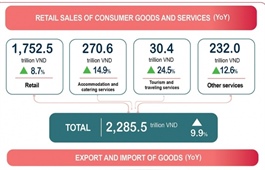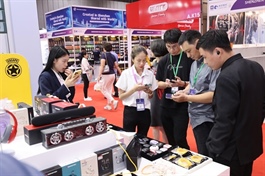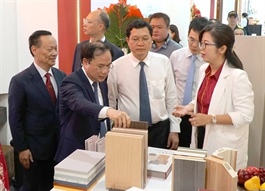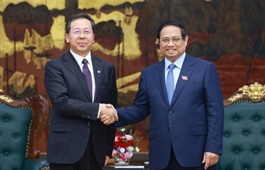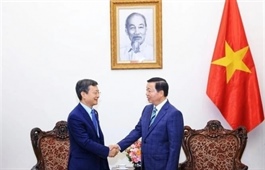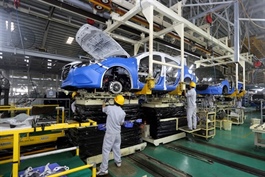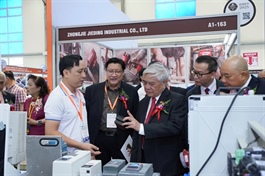Semiconductor goals hinge on qualified workforce
Semiconductor goals hinge on qualified workforce
Development of the semiconductor industry has been identified as a top priority. Dr. Le Quan, senior lecturer at the Faculty of Engineering of the Fulbright University Vietnam, spoke with VIR’s Hoang Oanh about the training process involved in building a qualified workforce.
Vietnam is expected to need approximately 50,000 semiconductor professionals with at least a university-level education by 2030. Given the current capacity and quality of training, do you think we can meet this demand?
|
Dr. Le Quan, senior lecturer at the Faculty of Engineering of the Fulbright University Vietnam |
In the semiconductor industry, workers can be broadly categorised into three main groups: design, manufacturing, and packaging/testing. Among these, the design segment typically requires high-level expertise, such as a university degree or higher. Many companies from South Korea and Taiwan even require candidates to hold a Master’s or PhD to engage in complex design tasks.
If we consider only university-level professionals, Vietnam is entirely capable of meeting the target of 50,000 personnel in the near future. Many universities as well as private institutions like FPT and Phenikaa have already launched programmes related to microchip design, with relatively high enrolment numbers.
However, without funding in advanced training, most personnel will remain at the level of cheap labour and struggle to create high value.
What is the current state of workforce training for the semiconductor industry in Vietnam?
We do have training institutions specialising in individual steps of the chip production process, but a complete production line has not yet been established. As a result, Vietnam’s manufacturing network still lacks infrastructure and qualified personnel.
Packaging and testing is an area where Vietnam has strong potential, thanks to investment from major corporations such as Intel, Apple, Hana Micron, and Onsemi. However, their factories primarily focus on the final stages of the value chain.
Currently, some private domestic firms have begun to show interest in the packaging and testing sector, but their involvement remains at a conceptual or small-scale level, mainly focusing on training. Each company has its own specific production line, so when personnel move to a new employer, they must undergo training from scratch.
One practical solution is to retrain engineers from related technical fields. Vietnam has a large pool of professionals in other engineering disciplines who, with 6-12 months of upskilling, could competently take on entry-level roles.
What are the challenges in implementing international-standard training programmes in high-tech fields like semiconductors?
The greatest challenge in semiconductor training is the lack of practical exposure. Many universities lack proper infrastructure, particularly laboratories. Limited funding at research and training institutions is another bottleneck.
Aside from funding, access to real-world business knowledge is equally important. Cooperation with industry allows educational institutions to understand specific, practical, and comprehensive requirements. However, since Vietnam’s semiconductor industry is still in its infancy, opportunities for collaboration between academia and enterprises remain limited.
There are currently some training programmes involving business elements. However, due to the high cost of chip production, only students with highly rated design projects are selected for production, limiting the number of students gaining hands-on experience.
To put Vietnam on the global chip design talent map, it is vital to have domestic companies offering outsourced services to international firms. At present, however, most chip design companies in Vietnam are foreign-invested, accounting for around 80-90 per cent, while the number of wholly Vietnamese enterprises remains low.
What policies has the government introduced to encourage and support semiconductor workforce training?
The government has introduced progressive policies to promote the development of semiconductor talent. These include investment in key infrastructure and financial support for high-tech production facilities. There are also tax and incentive policies aimed at attracting talent, along with a legal framework enabling localities to take initiative in talent acquisition.
The semiconductor workforce strategy also outlines budget provisions to establish large laboratories in Vietnam, helping to address the infrastructure shortage at universities. Vietnam can also learn from models in places like Taiwan by building shared laboratories, reducing the investment burden on both universities and enterprises.
- 10:58 15/05/2025




